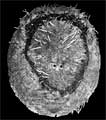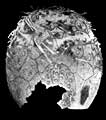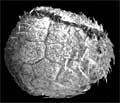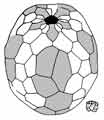The Echinoid Directory
Palaeostoma Agassiz, 1872, p. 147
[pro Leskia Gray, 1851, p. 134 (non Leskia Desvoidy, 1830) ]
| Diagnostic Features |
|
|---|---|
| Distribution | Recent, Indo-West Pacific; 20-110 m. |
| Name gender | neuter |
| Type | Leskia mirabilis Gray, 1851, p. 184 [=Palaeostoma mirabilis], by original designation. |
| Species Included |
|
| Classification and/or Status |
|
| Remarks |
|




